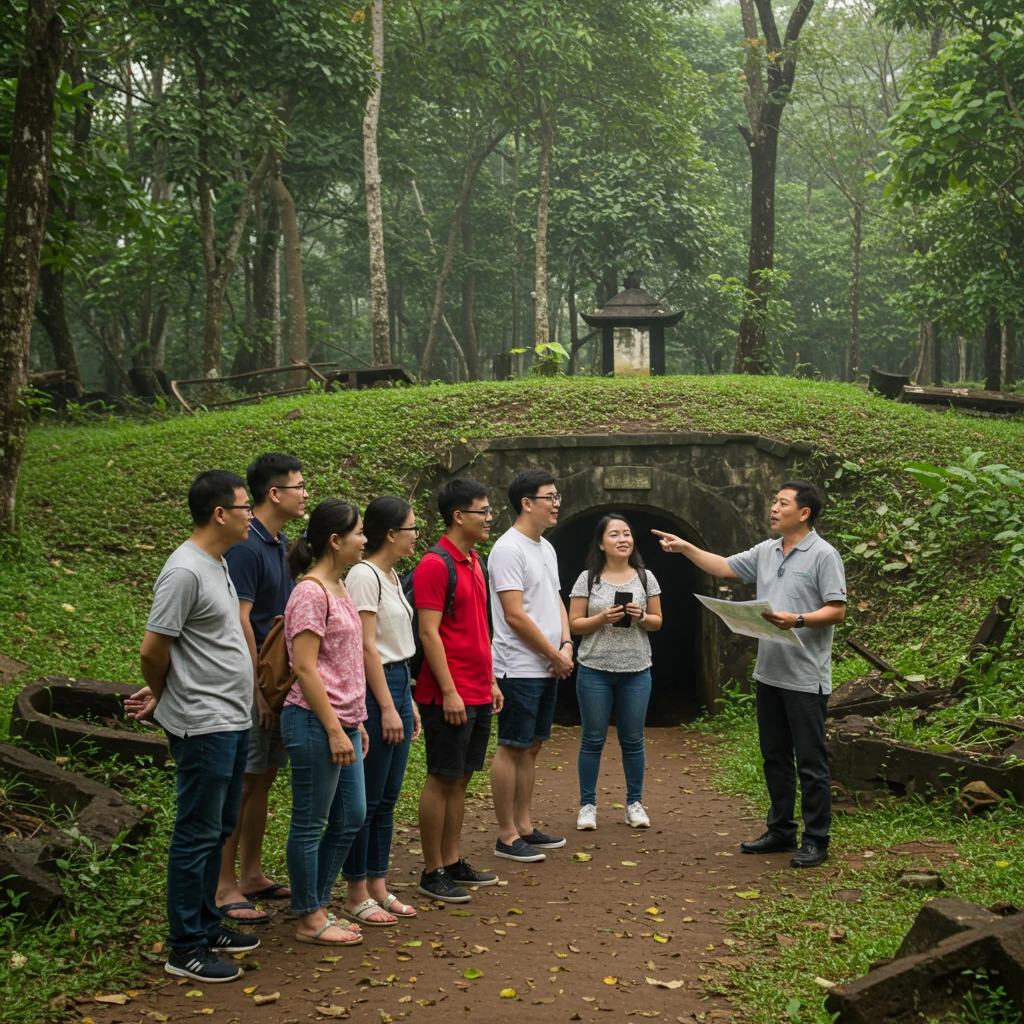Introduction to the Cu Chi Tunnels Small Group Morning Tour
The Cu Chi Tunnels stand as one of Vietnam’s most extraordinary historical sites, offering travelers a chance to experience a vital piece of the country’s past. A small group morning tour with an English-speaking guide provides a focused, enriching visit, allowing us to absorb the stories, sights, and atmosphere of this remarkable underground network. From the moment we step into the lush countryside outside Ho Chi Minh City, the day promises insight, adventure, and a deeper understanding of Vietnam’s resilience.
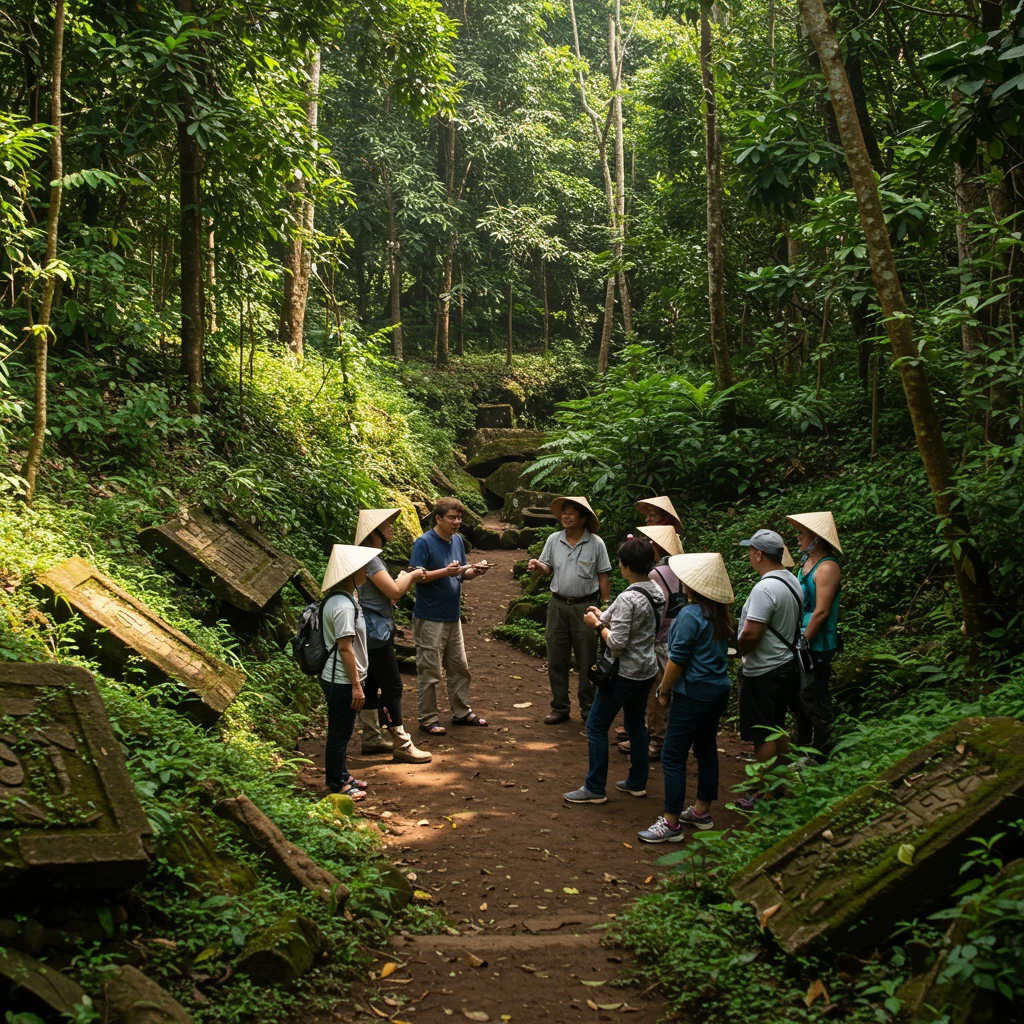
Why Visit the Cu Chi Tunnels?
Choosing to tour the Cu Chi Tunnels is more than just sightseeing—it’s a journey into the ingenuity and determination of the Vietnamese people. The tunnels are both a symbol of survival and a living classroom, filled with lessons on history, culture, and the human spirit.
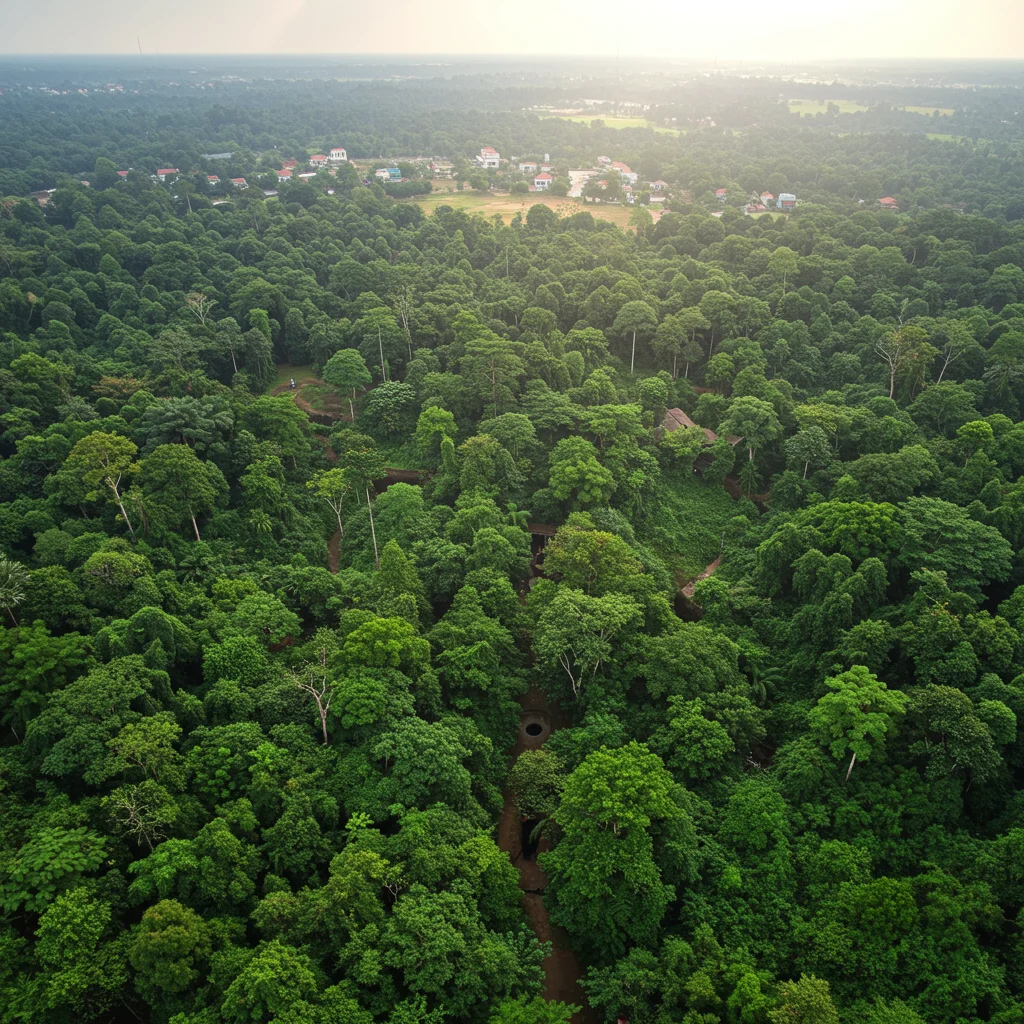
What Makes the Cu Chi Tunnels Unique?
What sets the Cu Chi Tunnels apart is their sheer scale and complexity. Stretching more than 200 kilometers beneath the earth, these passageways were meticulously constructed by hand. Inside, we find not only narrow crawl spaces but also hidden trapdoors, makeshift hospitals, living quarters, and even kitchens. The tunnels’ design allowed entire communities to function undetected during the Vietnam War, making them a marvel of engineering and resourcefulness.
Historical Significance of the Cu Chi Tunnels
The Cu Chi Tunnels played a pivotal role during the Vietnam War, serving as a base of operations for the Viet Cong. They provided shelter, supply routes, and strategic advantages against opposing forces. Today, walking through these tunnels offers us a direct, physical connection to the stories of bravery and hardship experienced by those who lived and fought here.
Overview of the Small Group Morning Tour
A small group morning tour is carefully designed to maximize comfort, learning, and engagement. With fewer participants, the experience feels more personal, and the guide can tailor explanations and answer questions more thoroughly.
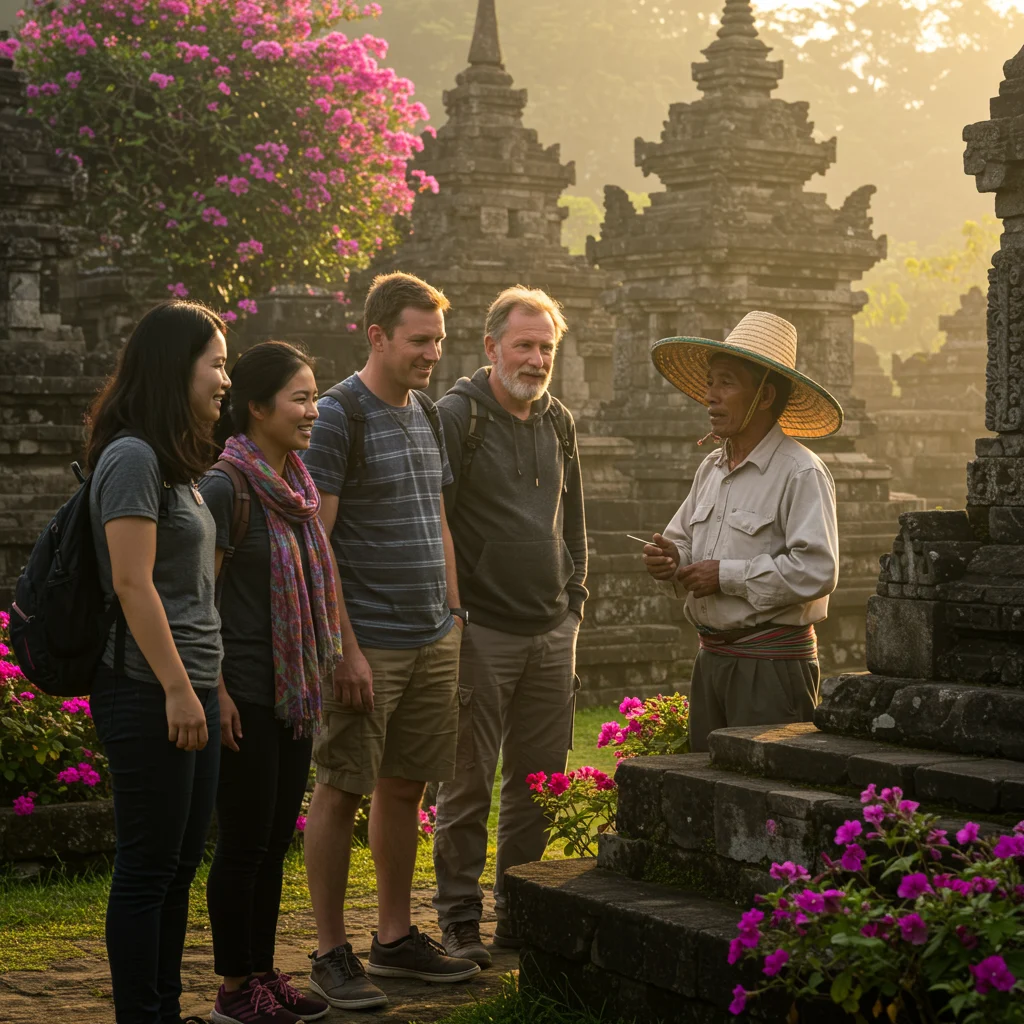
What to Expect on the Morning Tour?
Expect an early start, crisp morning air, and a well-paced itinerary that leaves plenty of time for exploration. The tour includes round-trip transportation from Ho Chi Minh City, a guided walk through the tunnel complex, interactive demonstrations, and opportunities to taste local snacks. The morning timing helps us avoid the midday heat and larger crowds, creating a more relaxed atmosphere.
Benefits of a Small Group Experience
Traveling in a small group means we benefit from closer interaction with our guide and fellow travelers. This setting encourages open discussion, more thoughtful questions, and a supportive environment for those who may feel apprehensive about entering the tunnels. Personalized attention ensures no one is left behind and that all voices are heard.
Who Is the English Guide?
The English-speaking guide is typically a local expert, well-versed in both history and the nuances of the tunnel system. Their role is to bridge the gap between past and present, providing context, answering questions, and sharing stories that bring the site to life.
How Does the English Guide Enhance Your Experience?
An experienced English guide transforms the tour from a simple walk to a vibrant learning opportunity. Their knowledge helps us interpret the significance of what we see, while their storytelling skills make history feel immediate and personal. Many guests leave with a new appreciation for the resilience and creativity of the people connected to the tunnels.
Tour Itinerary: Step-by-Step
The small group morning tour follows a thoughtfully structured schedule, ensuring we make the most of every moment.
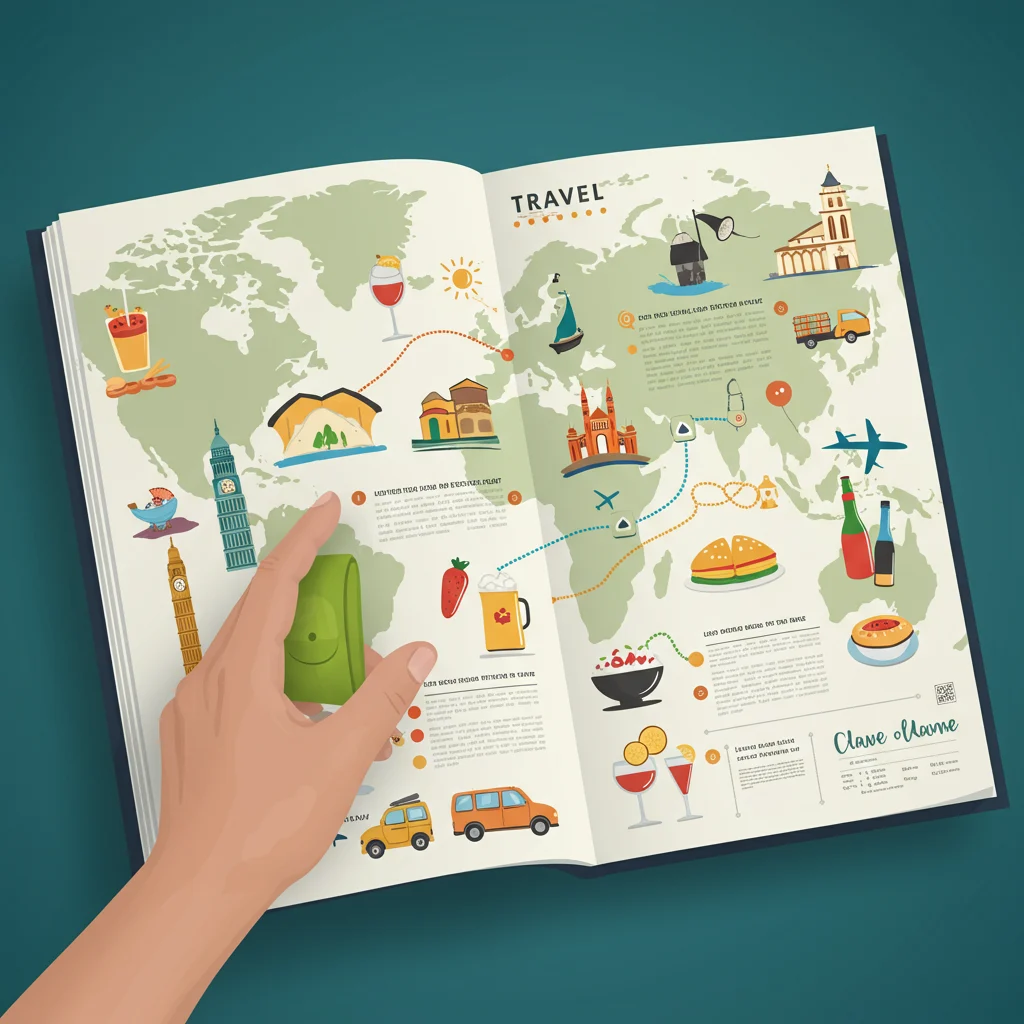
Morning Pickup and Departure Details
We begin with an early pickup from designated points in Ho Chi Minh City. The cool morning air and soft city light set a tranquil tone for the day. After a warm welcome, we board a comfortable, air-conditioned vehicle and are introduced to our guide and fellow travelers.
Traveling to the Cu Chi Tunnels
The drive to the Cu Chi Tunnels takes us through scenic countryside, with glimpses of rice paddies, rubber plantations, and local villages. The journey itself is an opportunity to observe daily life outside the city and ask the guide about Vietnam’s rural traditions.
Arrival and Welcome Briefing
Upon arrival, we gather for a briefing. The guide shares essential background information, practical tips for navigating the tunnels, and a preview of what’s ahead. This orientation helps us feel prepared and excited for the adventure.
Exploring the Tunnel Complex
We then set out to explore the main sections of the tunnel system, including reconstructed bunkers, command centers, and secret entrances. The guide demonstrates how the tunnels were hidden and explains their tactical importance during the war.
Interactive Activities During the Tour
A highlight of the tour is the chance to participate in hands-on activities—crawling through a section of tunnel, inspecting trapdoors, or handling historical relics. These experiences deepen our understanding and create lasting memories.
Return Journey and Drop-off
After the tour, we relax on the return trip to Ho Chi Minh City. The guide answers any final questions and shares recommendations for further exploration, such as the best neighborhoods to stay in as discussed in our post about the best areas to stay in Ho Chi Minh City.
Key Highlights of the Cu Chi Tunnels Tour
The tour is filled with unique moments and educational opportunities that leave a lasting impact.
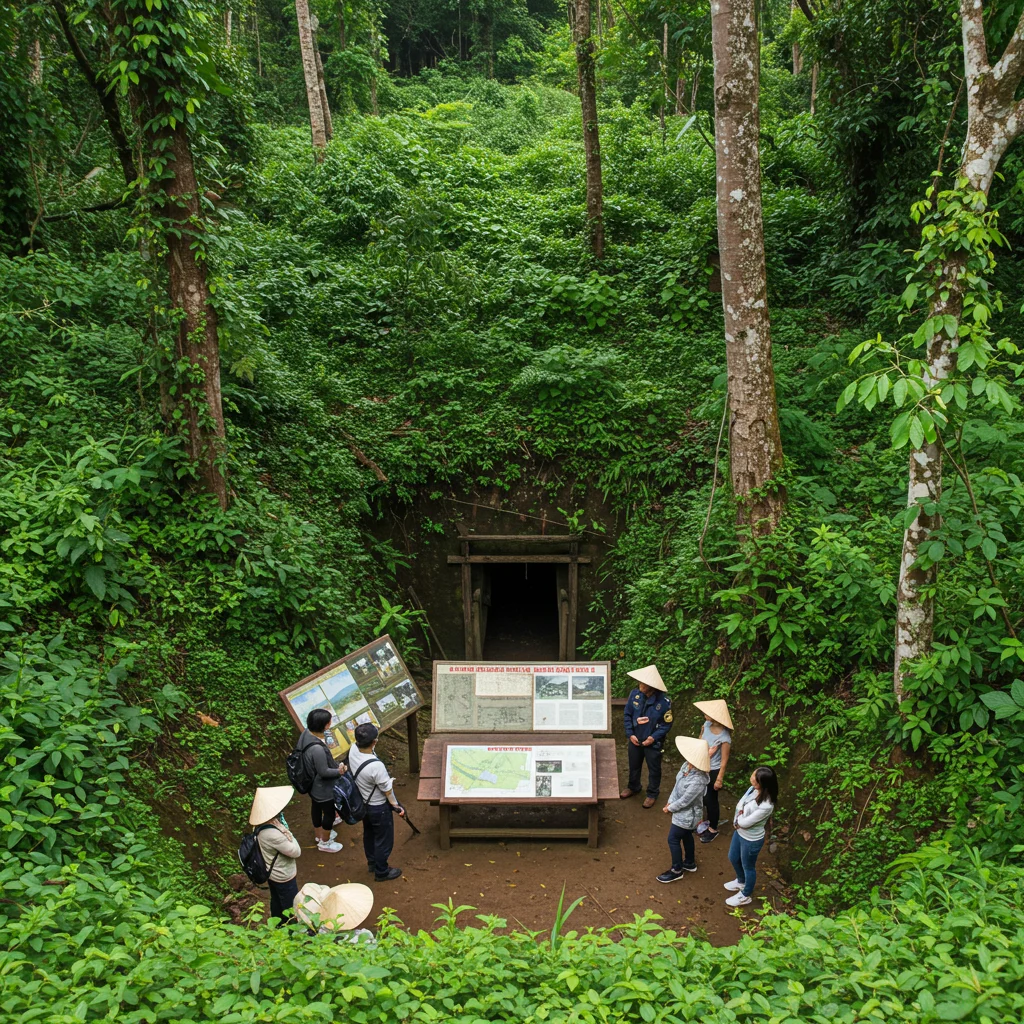
Crawling Through the Tunnels: What’s It Like?
Crawling through the narrow passageways is both thrilling and humbling. The air grows cooler underground, and the walls press close, amplifying every sound. This firsthand experience offers a glimpse into the daily reality faced by those who lived here for months at a time.
Learning About Trap Doors and Booby Traps
The guide demonstrates the ingenious construction of trap doors and booby traps, explaining their role in defense and survival. We’re often surprised by the craftsmanship and the strategic thinking that went into these devices.
Discovering Underground Living Quarters
Within the tunnels, we find reconstructed living quarters—tiny kitchens, sleeping spaces, and meeting rooms. The scent of earth and the dim, filtered light evoke the challenges of underground life. These spaces help us reflect on the daily routines and courage of the tunnel inhabitants.
Historical Exhibits and War Relics
The site features a range of historical exhibits and relics, including weapons, uniforms, and photographs. These artifacts provide context and help us piece together the broader narrative of the war.
Tasting Local Cassava and Tea
We’re invited to sample traditional snacks—steamed cassava and hot tea. The simple flavors evoke the resourcefulness of those who once relied on these staples for sustenance.
Firing Range Experience: Is It Worth Trying?
For those interested, there’s an optional visit to the onsite firing range. Guests can try firing period weapons under strict supervision. While not for everyone, this experience offers a visceral sense of the past, though we always encourage mindful participation.
Frequently Asked Questions About the Cu Chi Tunnels Tour
Many travelers have practical questions before embarking on a Cu Chi Tunnels morning tour. Here, we address some of the most common queries.
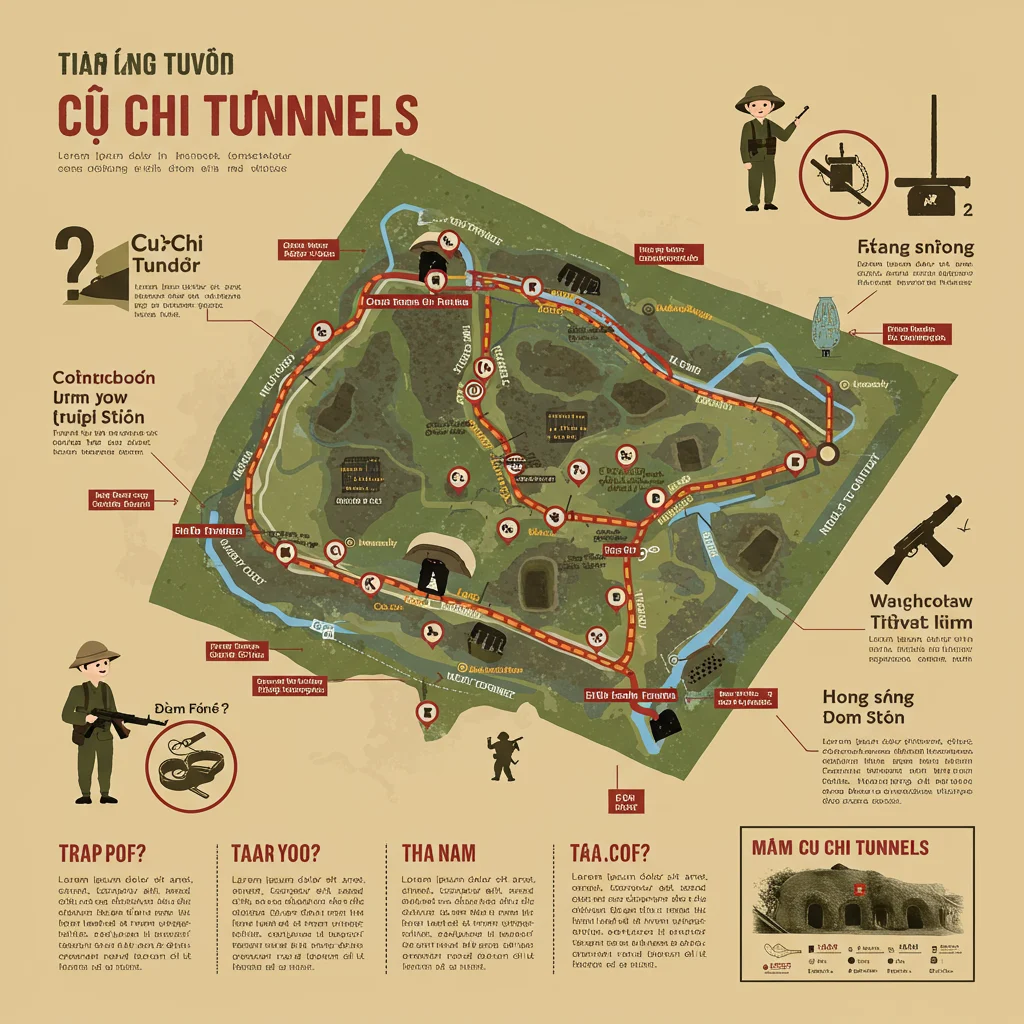
How Long Does the Morning Tour Last?
The typical morning tour lasts around 5 to 6 hours, including transportation. This schedule ensures we return to Ho Chi Minh City by early afternoon, leaving the rest of the day free for other activities.
Is the Tour Suitable for Children and Seniors?
The tour is suitable for most ages, especially with the flexibility of a small group. However, navigating the tunnels can be physically demanding. Alternative routes and surface-level exhibits are available for those who prefer to stay above ground.
What Should You Wear and Bring?
We recommend comfortable, lightweight clothing and sturdy shoes. The ground can be uneven and dusty. Don’t forget sunscreen, insect repellent, and a refillable water bottle for hydration.
Are the Tunnels Claustrophobic?
Some sections of the tunnels are very tight, which can be uncomfortable for those sensitive to confined spaces. Participants may choose to skip these areas—there’s no obligation to enter any part that feels too small.
How Accessible Are the Cu Chi Tunnels?
Accessibility is limited due to the historical nature of the site. While there are some paved paths and surface-level exhibits, the tunnels themselves are not wheelchair accessible. For a comparison with accessible tours in other destinations, see our review of the Werribee Zoo tour in Melbourne.
Booking Your Cu Chi Tunnels Small Group Tour
Securing your spot on a Cu Chi Tunnels morning tour is straightforward, with several convenient options for online booking.
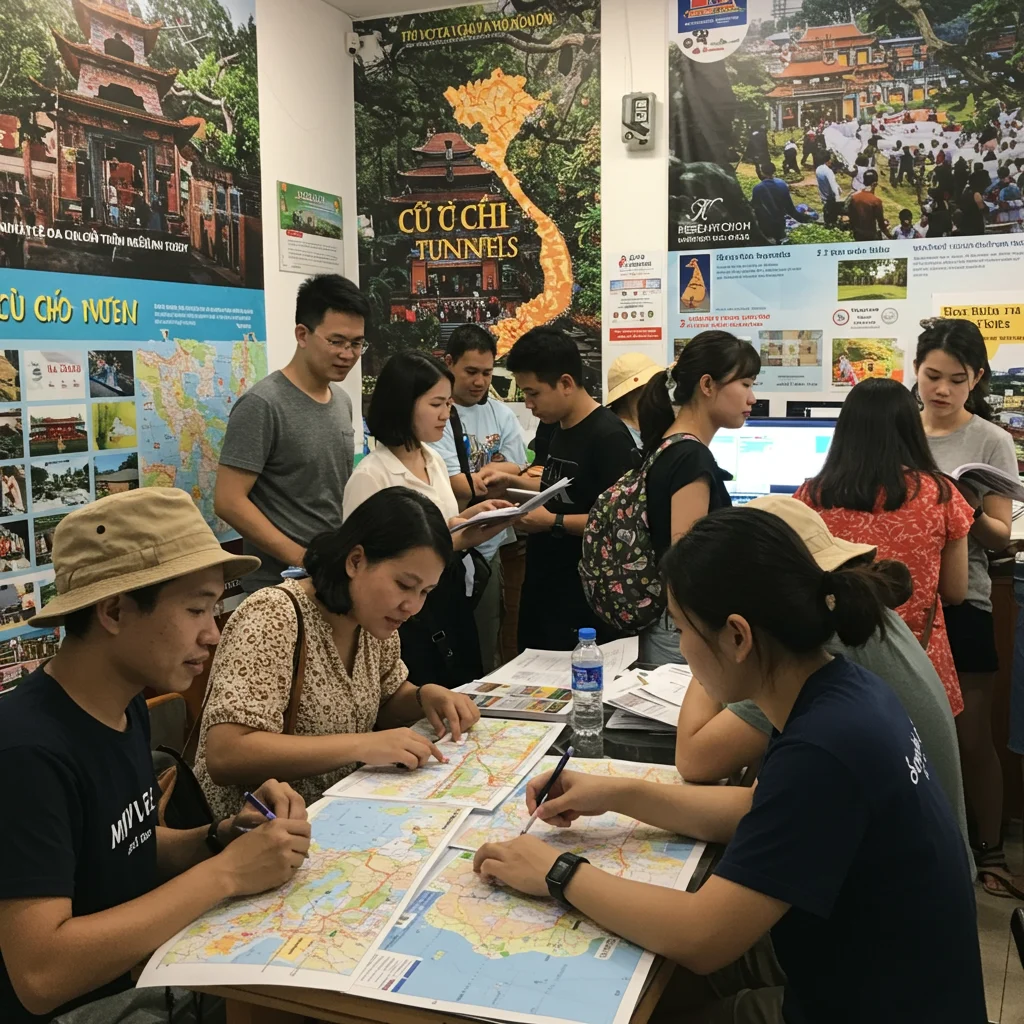
How to Reserve Your Spot Online
We recommend booking through a reputable platform to guarantee availability and transparent pricing. Viator is a trusted service where you can quickly find tours, read verified reviews, and confirm your reservation in just a few clicks.
What’s Included in the Tour Price?
The tour price typically covers round-trip transportation, entrance fees, an English-speaking guide, and light refreshments. Some packages may include additional activities, so it’s wise to review the details before booking.
Cancellation and Refund Policy
Most providers, including Viator, offer flexible cancellation policies. Be sure to check the terms for your specific tour to understand refund deadlines and any associated fees.
Group Size and Availability
Small group tours usually accommodate 8 to 15 participants. Booking in advance is recommended, especially during peak travel seasons when demand is high.
Transportation Options for the Tour
Getting to the Cu Chi Tunnels is easy with several transportation choices tailored to comfort and convenience.

Is Hotel Pickup Available?
Many tour operators offer hotel pickup from central Ho Chi Minh City. This service adds convenience and ensures a smooth start to the day.
Traveling by Bus vs. Private Vehicle
Small group tours typically use modern minibuses for shared transfers, while private tours can arrange personalized vehicles. Both options provide air conditioning and comfortable seating, but private vehicles offer more flexibility for families or groups with special needs.
Eco-Friendly Travel Tips
To minimize our environmental impact, we suggest traveling with reusable water bottles, avoiding single-use plastics, and respecting the natural landscape. Choosing group transportation also helps reduce emissions compared to multiple private cars.
Travel Tips for the Cu Chi Tunnels Morning Tour
Preparation enhances our comfort and enjoyment during the tour. Thoughtful planning helps us get the most from the experience.
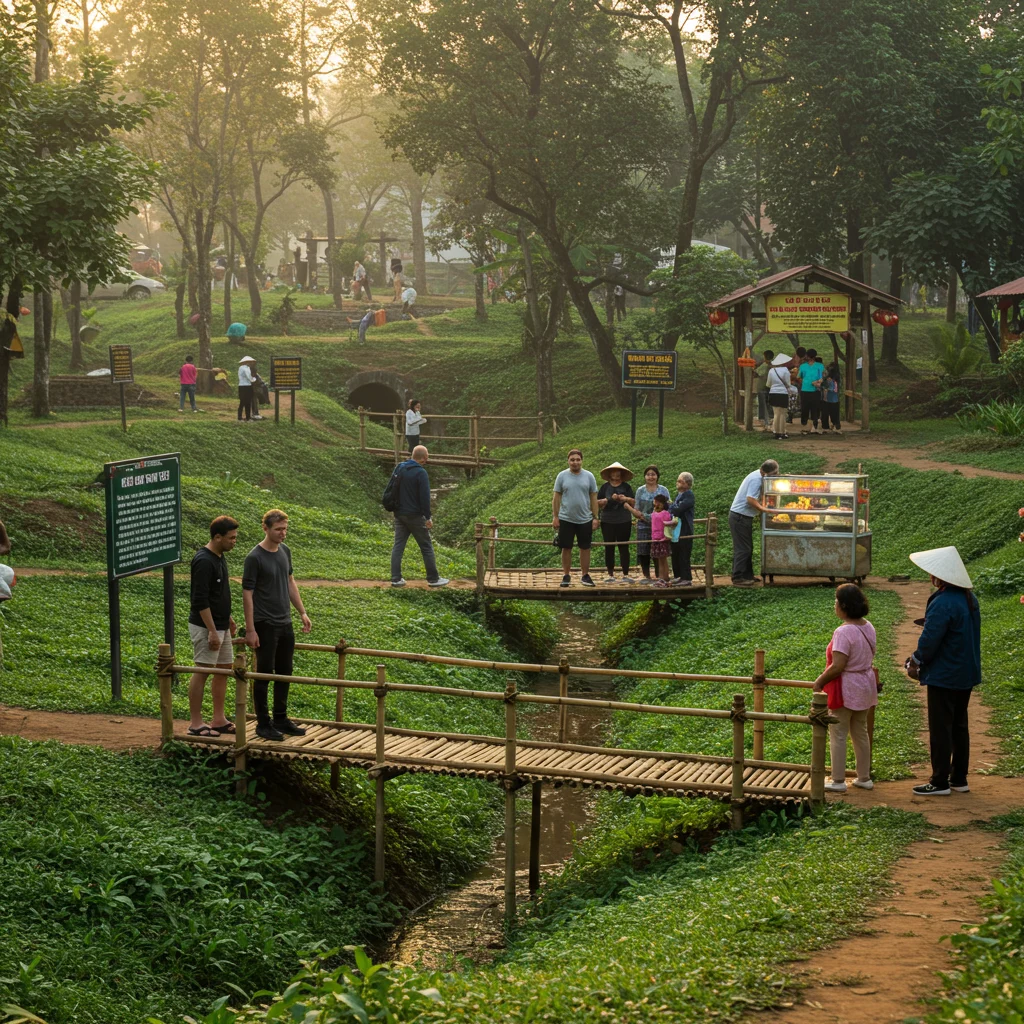
Best Time to Visit the Cu Chi Tunnels
Morning tours are ideal, as the weather is cooler and the site is less crowded. The light is softer for photography, and the atmosphere feels peaceful.
How to Prepare for the Tour
A good night’s sleep and a light breakfast are recommended. Bring any necessary medications, and inform your guide of health concerns before departure.
What to Pack for Comfort and Safety
- Comfortable, breathable clothing
- Closed-toe shoes
- Sunscreen and insect repellent
- Hat and sunglasses
- Water bottle
- Camera or smartphone
Photography Tips at the Cu Chi Tunnels
The tunnels and surrounding grounds provide striking photo opportunities. Use natural light, and be mindful of low-light conditions underground. Always ask permission before photographing staff or other visitors.
Cultural Etiquette and Respectful Behavior
Respect the site’s significance by keeping noise to a minimum and following the guide’s instructions. Dress modestly, especially in areas with memorials or sacred spaces. As experts often say:
“Travel is as much about listening as it is about seeing—true understanding comes from quiet respect.”
Safety Considerations During the Tour
Safety is a priority throughout the Cu Chi Tunnels tour. Guides are trained to manage group movement and address any concerns that may arise.
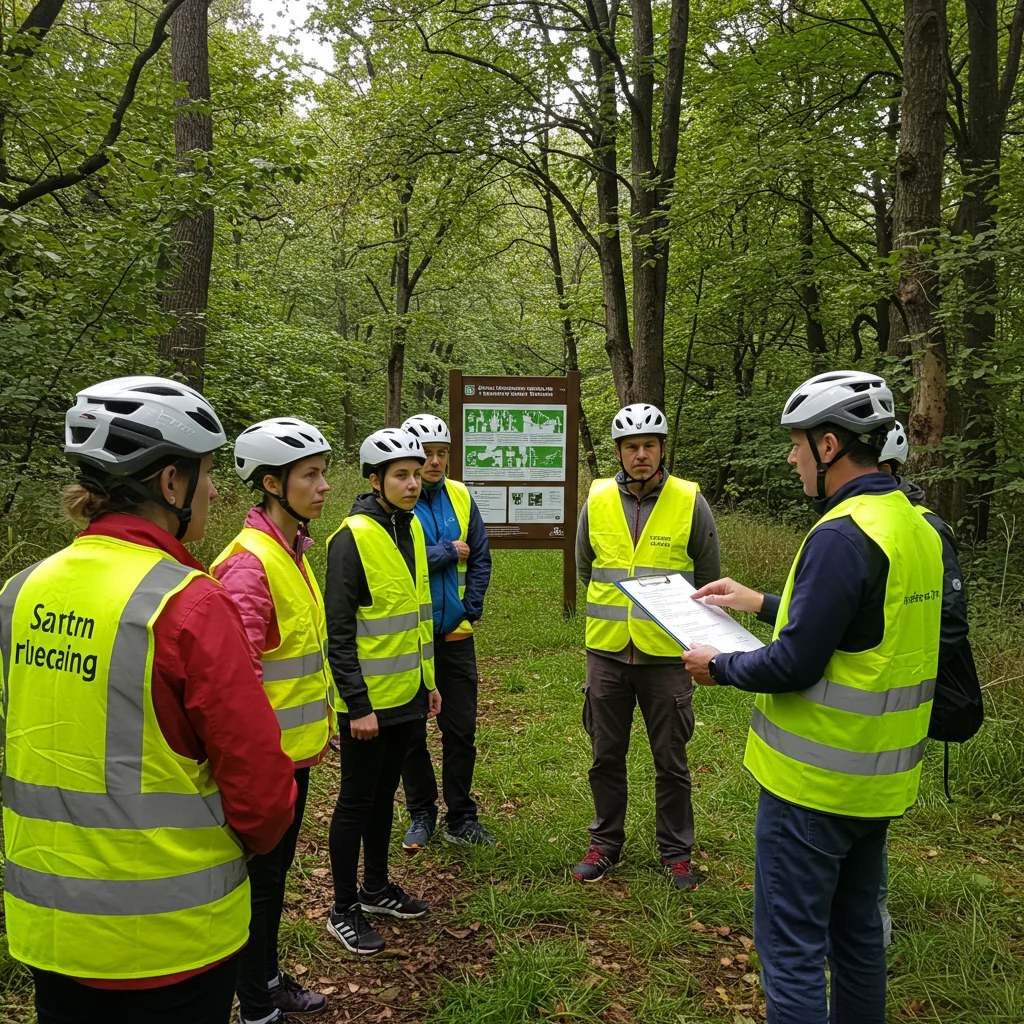
Are the Tunnels Safe to Enter?
The reconstructed tunnel sections open to visitors are regularly inspected for stability. Lighting and ventilation have been improved for comfort. However, we should always move slowly and follow the guide’s instructions.
Health Precautions and Accessibility
Those with respiratory issues or mobility limitations should consult their doctor before participating. The site is not wheelchair accessible, but surface-level exhibits allow everyone to engage with the history.
Emergency Contacts and Support
Guides carry emergency contact information and first-aid supplies. In the rare event of an emergency, local support is readily available. It’s wise to keep travel insurance details handy; for advice, see our article on planning safe day trips abroad.
Understanding the History of the Cu Chi Tunnels
Learning the backstory of the tunnels deepens our appreciation for their significance and the sacrifices made here.

How Were the Tunnels Built?
The tunnels were dug by hand using simple tools, often at night to avoid detection. Soil was concealed in bomb craters or spread in riverbanks, and the network expanded over years of painstaking effort.
Life Inside the Tunnels During the War
Life underground was harsh—hot, humid, and always tense. Families cooked, ate, and slept in small chambers, rarely seeing daylight for days. Stories of resilience and solidarity abound, showing the strength of those who called the tunnels home.
Role of the Tunnels in the Vietnam War
The Cu Chi Tunnels provided a strategic advantage, allowing for surprise attacks, secure movement, and storage of supplies. Their existence challenged the expectations of opposing forces and became a symbol of resistance.
Preservation and Restoration Efforts
Today, portions of the tunnels have been reinforced and restored for educational purposes. Preservation efforts focus on balancing historical authenticity with safety and accessibility for visitors.
Comparing Cu Chi Tunnels Tours: Morning vs. Afternoon
Choosing between a morning and afternoon tour depends on personal preferences, but the morning option offers distinct advantages.
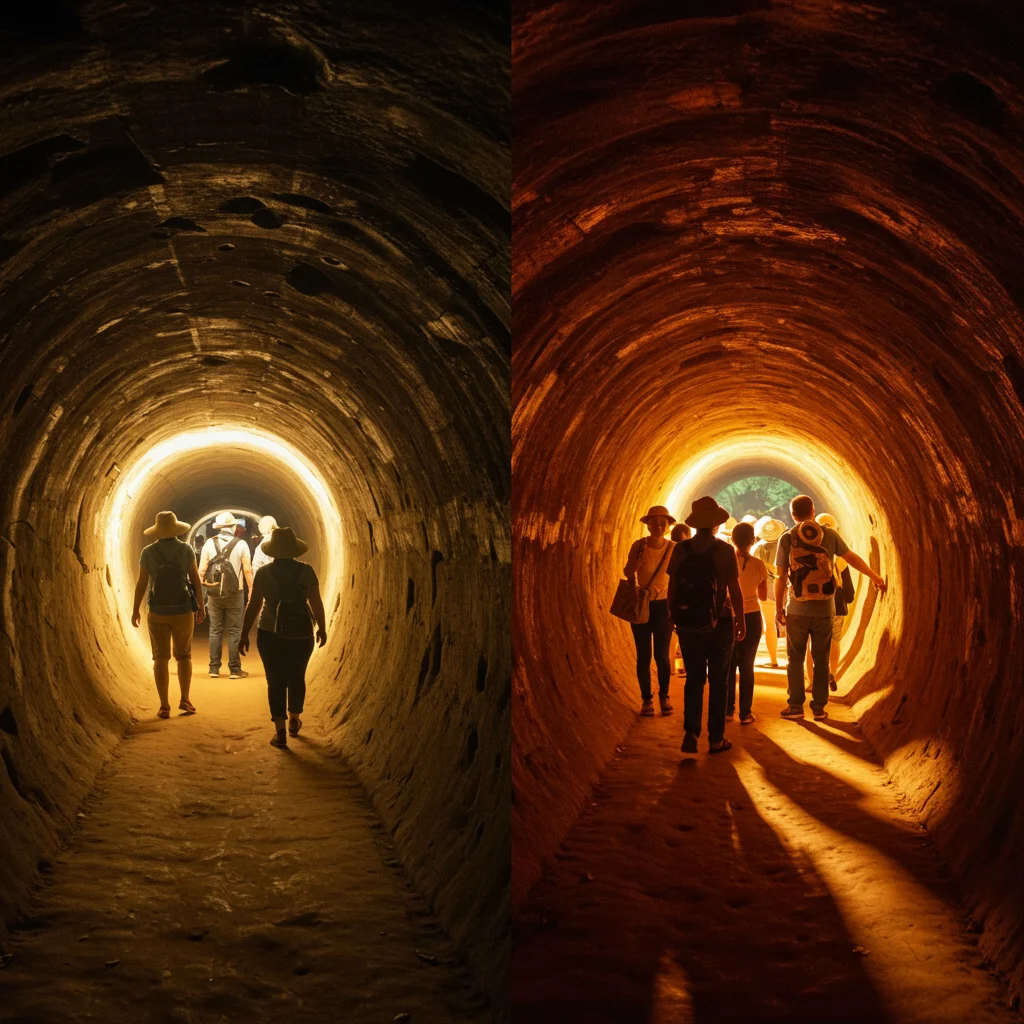
Advantages of the Morning Tour
Morning tours benefit from cooler temperatures and quieter surroundings, offering a more comfortable and contemplative experience.
Crowd Levels and Comfort
Arriving early allows us to avoid peak crowds, making it easier to move through the tunnels and absorb the guide’s explanations without distraction.
Weather Considerations
Vietnam’s midday sun can be intense, especially in rural areas. Morning tours reduce exposure to heat and allow for a more relaxed pace.
Reviews and Testimonials from Past Guests
Feedback from previous participants consistently highlights the value of the small group format and the expertise of the English guide.
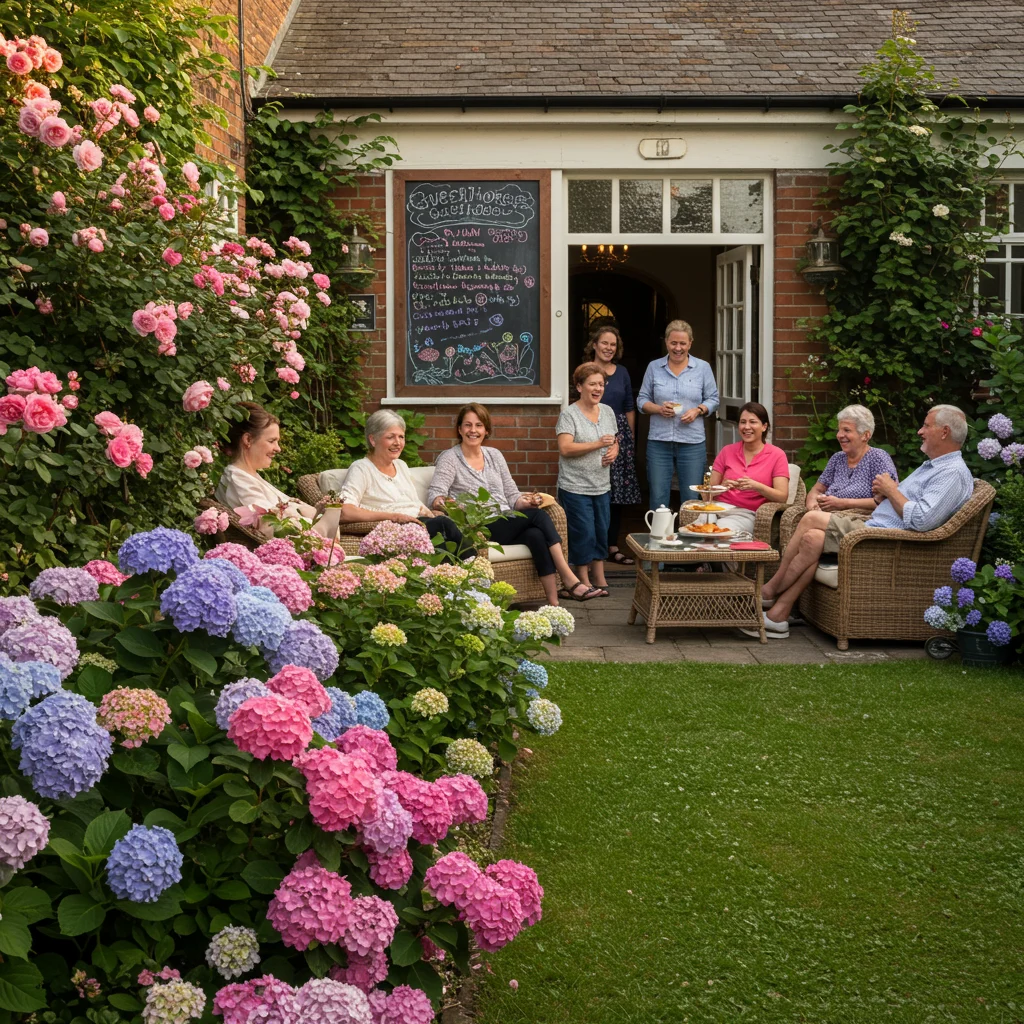
What Do Guests Say About the English Guide?
Guests praise the guides for their deep knowledge, engaging storytelling, and willingness to answer questions. Many mention feeling moved by personal anecdotes and historical insights shared during the tour.
Memorable Moments Shared by Travelers
Travelers often recall the thrill of crawling through the tunnels, tasting cassava and tea, and hearing firsthand accounts of life during the war. These moments foster a sense of connection and appreciation for Vietnam’s history.
Tips for Making the Most of Your Cu Chi Tunnels Tour
Maximizing your experience comes down to curiosity, preparation, and active participation.
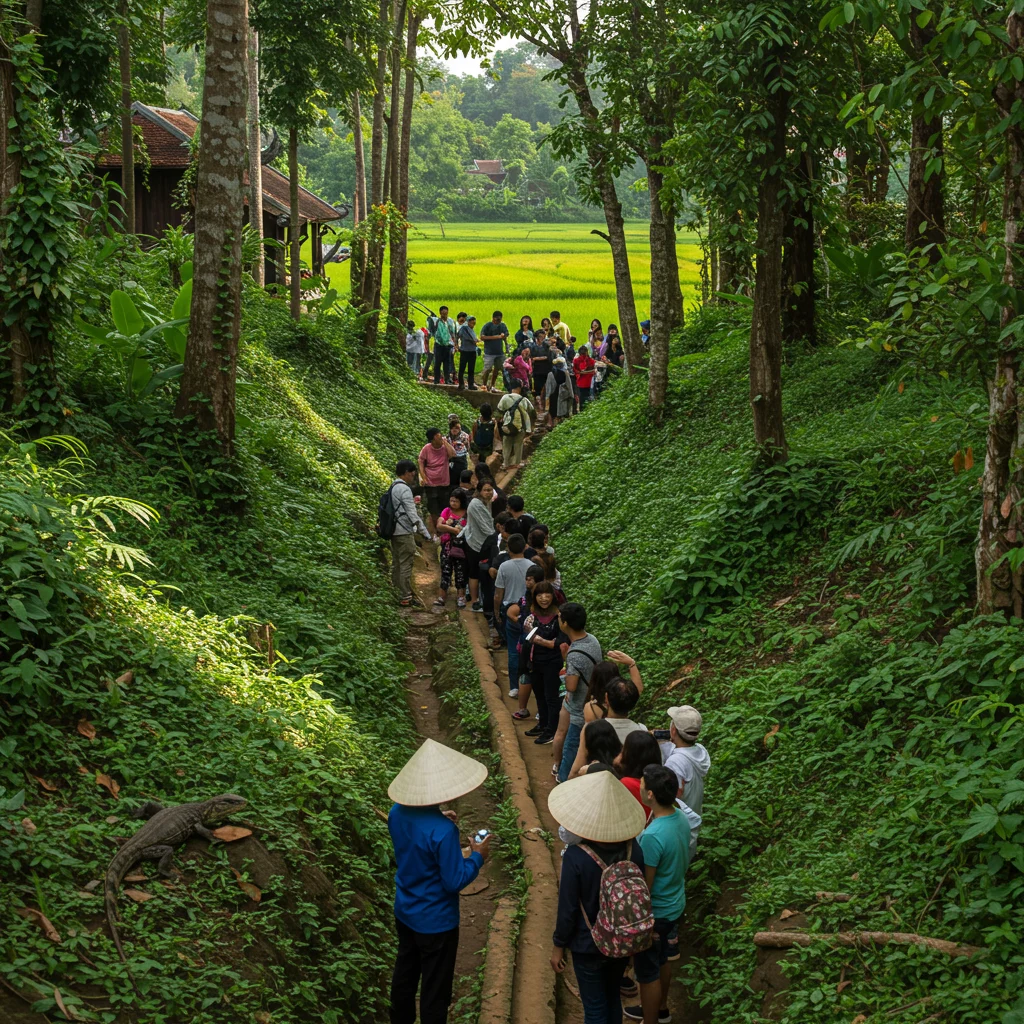
How to Engage with Your Guide
Ask thoughtful questions, listen attentively, and share your impressions. Guides appreciate engaged groups and often tailor their stories to the interests of participants.
Questions to Ask During the Tour
- How were specific tunnel sections constructed?
- What daily life was like for families underground?
- How has the site changed since the end of the war?
- What preservation challenges exist today?
Maximizing Your Learning Experience
Take notes, photograph exhibits, and reflect on the broader historical context. For more ideas on immersive travel experiences, see our coverage of the Tolantongo day trip in Mexico.
Nearby Attractions and Activities After the Tour
After visiting the Cu Chi Tunnels, there are several worthwhile stops and activities nearby.

What Else Can You Explore Near Cu Chi?
Consider visiting the Ben Duoc Memorial Temple or the peaceful countryside markets. Cycling tours and local farm visits offer a glimpse into rural life.
Recommended Restaurants and Cafés
Several roadside eateries serve authentic Vietnamese dishes, from pho to banh mi. Enjoying a meal here offers a chance to relax and reflect on the morning’s experience.
Shopping for Souvenirs
Local markets and gift shops sell handmade crafts, war memorabilia, and unique mementos. These items make meaningful reminders of your visit.
Sustainable Tourism at the Cu Chi Tunnels
Responsible travel is a shared commitment. The Cu Chi Tunnels tour offers opportunities to support local communities and preserve cultural heritage.
How Does the Tour Support Local Communities?
Many tours partner with local businesses for transportation, food, and souvenirs. Entrance fees contribute to preservation and educational programs, helping maintain the site for future generations.
Responsible Visitor Practices
- Follow designated paths and respect signage
- Minimize waste and dispose of trash properly
- Support local artisans and small businesses
- Share your experience to raise awareness about sustainable travel
Final Thoughts: Is the Cu Chi Tunnels Small Group Morning Tour Right for You?
Reflecting on the tour’s highlights and practicalities can help us decide if this experience matches our interests and travel style.

Summary of Key Benefits
The small group morning tour offers a comfortable pace, expert guidance, and immersive activities. We gain a richer understanding of Vietnam’s history and leave with memories that last a lifetime.
Who Will Enjoy This Experience Most?
History enthusiasts, families, solo travelers, and anyone curious about Vietnam’s past will find the tour rewarding. The flexibility of the itinerary suits a range of ages and physical abilities.
How to Book Your Adventure Today
Ready to plan your trip? Booking is simple with Viator, where you can find tours, check availability, and secure your spot with confidence.
How to Book on Viator
Booking your Cu Chi Tunnels Small Group Morning Tour is straightforward through Viator. Simply search for the tour, review the itinerary, and follow the prompts to reserve your place. Viator provides instant confirmation, secure payment options, and customer support for peace of mind.

If you’re planning additional activities in Vietnam or elsewhere, you can also use Viator to book activities and excursions that fit your interests and schedule.
Frequently Asked Questions (FAQs)
Below are answers to a few additional questions travelers often ask about the Cu Chi Tunnels tour.

Can You Visit the Cu Chi Tunnels Without a Guide?
While it is technically possible to visit the Cu Chi Tunnels independently, we strongly recommend joining a guided tour. The insights and context provided by an experienced guide are invaluable for understanding the site’s significance.
Is the Tour Wheelchair Accessible?
The tunnels themselves are not wheelchair accessible due to their historic construction. However, some surface-level areas and exhibits can be accessed with assistance.
Are Meals Provided During the Tour?
Most morning tours offer light snacks such as cassava and tea. Full meals are usually not included, so we suggest bringing extra snacks or planning to eat after returning to Ho Chi Minh City.
Conclusion
A morning visit to the Cu Chi Tunnels is an unforgettable journey into Vietnam’s past, offering insight, reflection, and meaningful connection. The small group format and expert English guide ensure a rewarding, personalized experience. For those seeking to understand history firsthand and create lasting travel memories, this tour stands among the most compelling options in the region.

To read more about this and other unique travel experiences, visit Unisho—your trusted source for expert travel insights and inspiration.
“Disclaimer: This information is accurate to the best of our knowledge; however, there may be changes or mistakes. Please verify exact details on the Viator booking page.”

